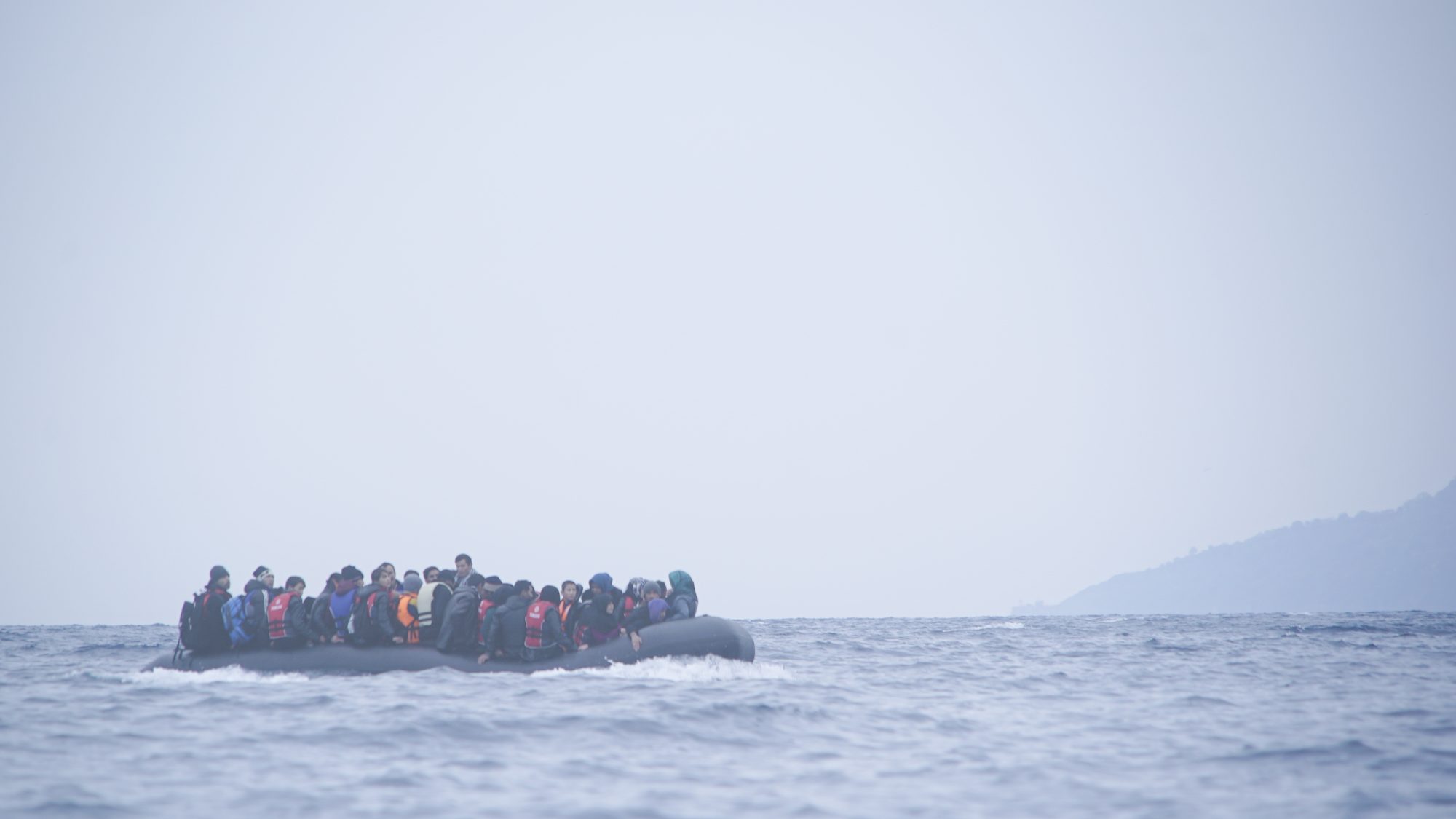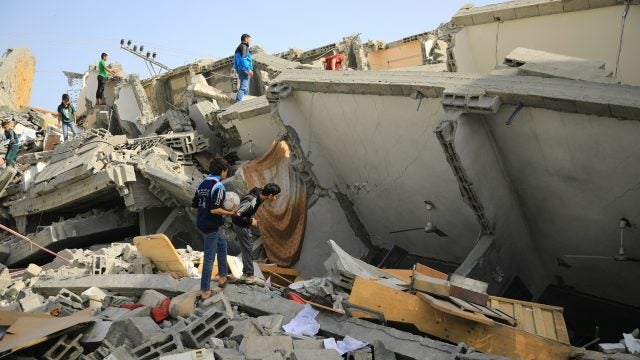
Title: EU Migration Policy Reform: Alternatives to the Australian Model
The European Union Commission’s new Pact on Migration and Asylum reflects a continued trend of externalization and deterrence, resembling the exclusionary model created by Australia. The German presidency of the EU was not able to cut the Gordian knot presented in the form of deep divisions among European countries over the question of refugee relocation. Alternatives to exclusionary models of refugee policies can pave the path for more pragmatic and long-term European migration and refugee policies.
Introduction
The Common European Asylum System was not well prepared for the 2015 refugee crisis. The European Union had been pursuing the harmonization of asylum policy since the beginning of the twenty-first century, but the process was never completed due to slow national policy implementation and mounting political antagonism among EU member states. The EU reacted to domestic pressure by strengthening external European migration policy. Externalization refers to the “expansion of border and migration controls beyond the so-called ‘migrant-receiving countries’ in the Global North and into neighboring countries or sending countries in the Global South.”
The “Australian model” has become a benchmark for rigorous externalization policies and a model for some European politicians. In 2016, Austrian Prime Minister Sebastian Kurz suggested the EU should follow the “Australian example” to discourage migrants from embarking on the often perilous journey to Europe. Since the 1990s, Australia has developed a system of extraterritorial detention of migrants who enter the country or are found in Australian territory without a valid visa.
The metaphor “Fortress Europe” has established itself in European political discourse as the “Australian Model” was adapted to the EU’s regional context. During the emergence of the Schengen Agreement in 1985, this metaphor was first introduced into the debate over demarcation of the European space. Over the years, the metaphor has evolved from the Australian model to become the realpolitik objective of certain European policymakers. Both concepts are based on the same set of strategies and instruments to address migratory movements.
Applied to the EU, however, shipping asylum seekers out of the EU is not a viable long-term option. The disastrous record of externalization has already harmed the EU’s foreign relations, reputation, and credibility. The EU instead must find a new, alternative approach that is consistent with international and EU law and also reflects European values.
Continuing Trends of Externalization and Deterrence
Externalization of the EU migration policy has involved increasing control of and limiting migration movements to countries outside the EU, with the aim of preventing migrants from even getting close to reaching Europe. This externalization strategy has not only been applied in proximate North African countries, but also in sub-Saharan Africa. . The EU’s New Pact on Migration and Asylum states that “cooperation with third countries in the area of return should be improved economically, and diplomatic leverage of the EU including development aid as well as visa policy should be used to increase the willingness of countries of origin and transit to take back refugees and migrants.” The applications of this proposal are already evident in the security cooperation to protect the EU’s external borders and control migration movements outside Europe.
The strategy of deterrence is also evident in the reception conditions of those seeking protection along the EU’s external border throughout the Mediterranean. For years, the EU Commission has affirmed that Europe would not turn back boats on the open sea. Recently though, evidence is mounting that Frontex, the EU’s border security agency, was likely to have been actively involved in pushbacks. In addition to the EU–Turkey agreement, subsequent deals have been brokered with countries in northern Africa, such as Libya, in attempts to close the Central Mediterranean route into Europe.
In a further move towards the Australian model, detention centers on several Greek islands have begun to resemble those on Manus Island and Nauru in both purpose and in condition. The introduction of the “hotspot approach” in May 2015 and the EU-Turkey Declaration of March 2016 led to the tense situation on the Greek islands of Chios, Leros, Lesbos, Kos, and Samos. The Greek government feared that refugees could go into hiding to avoid deportation to Turkey, so Greek law was altered to allow arrivals to be detained on the islands for months or even years until the termination of the asylum procedure. The capacity of the camps was quickly exceeded, as they developed from ‘transit stations’ to heavily controlled camps, some with inhumane living conditions. Even last year’s fire at a refugee camp on the Greek island of Lesbos did not result in evacuation from the island. The conditions in Greek EU hotspots such as these violate fundamental rights and EU directives, but, most importantly, they send the signal that it is better not to come to Europe.
Even if EU and member-state politicians condemn the conditions under which migrants are living on the Greek islands, the chilling images at Europe’s borders and the reluctance of officials to act on both EU and national levels remain.
An Australian Model is No Option for Europe
In recent years, Australia’s refugee policy has repeatedly served as a model for European politicians to manage migration flows across the Mediterranean Sea. The idea of “regional disembarkation platforms” on African soil is just one example of how the principle of extraterritorial camps, such as those on the Australian islands of Nauru and Manus, has been adapted by European policy-makers, who have attempted to set up camps for processing asylum claims of migrants rescued at sea in countries in North Africa rather than within the EU. The introduction of such a model in Europe presents legal, geographic, and ethical hurdles. Unlike Australia, Europe is not a single-nation island with one common border, immigration, and asylum policy. Rather, the sheer size of Europe’s external borders makes it almost impossible to cohesively control cross-border movements. The extraterritorial detention of asylum seekers has been sharply criticized by human rights organizations and the United Nations High Commissioner on Refugees (UNHCR) on several occasions. As a cautionary example, Australia’s refugee policy demonstrates a creeping escalation of a system of deterrence over the years that not Australia, nor the EU, could have imagined. A similar escalation and desensitization to human rights abuses is now evident in the response to the humanitarian disaster of European refugee camps.
Alternatives: Three Points for a Progressive Approach
The record of this externalization and deterrence policy has been disastrous so far both for the development of partner countries outside Europe, as well as for the reputation and credibility of the EU. Preventing migration to Europe by pre-emptively suppressing movement has severe, detrimental effects on migrants’ rights and lives. These policies also have a negative impact on African efforts to strengthen free movement to enhance economic development and trade. While the EU’s decisions surrounding refugee policy will not be abandoned immediately, reform is needed. “Fortress Europe” must yield to a more comprehensive European refugee and migration policy, which can be achieved through several steps:
1. A Politically Progressive Coalition of Humanitarian Actors
A group of European countries could form a coalition willing to address the humanitarian disaster on the Greek islands. With a single humanitarian initiative, the coalition could evacuate all remaining refugees on the Greek islands and distribute them among the coalition countries. While this is not yet a long-term strategy, it would be a symbolic humanitarian act that signals that human rights and refugee protection are being respected in Europe. From a publicity perspective, this would also benefit European governments by turning the public’s attention away from the situation at the external borders and divert scrutiny of squalid refugee camps.
To ensure long term sustainability, this action would open a window of opportunity for deliberations to create a resilient asylum and refugee policy. Core elements for a policy change would include: European sea rescue, common European asylum procedures such as repatriation, distribution of refugees via matching systems, expansion of the European Asylum Support Office (EASO), and independent human rights monitoring of EU border management. In addition to the Common European Asylum System reform, municipalities that voluntarily agree to receive and integrate asylum seekers should receive money from an Integration and Development Fund as proposed by the Municipal Integration and Development Initiative (MIDI) and an equal amount of funding for urban and community development.
2. Decentralizing Legal Pathways
The policy of housing migrants in large camps close to EU borders does not make asylum procedures more effective or efficient. Rather, it subjects migrants to long detentions in inhumane living conditions. An alternative exists to establish a decentralized system consisting of the embassies of the twenty-six member states of the EU as well as the diplomatic missions of the EU, where humanitarian visas or asylum visas are issued. An asylum visa is a special (humanitarian) visa for carrying out an asylum procedure in the respective state where the visa application is submitted. If adequately staffed and resourced, embassies could be further involved in the asylum process. Embassies would cooperate with national asylum authorities on processing asylum applications, which in the digital age could increase the efficiency of processes such as hearings conducted by staff of the national asylum authority. In an EU-wide asylum visa system, member states could cooperate in such a way that the state that processes the application via its national embassy is not necessarily the state that receives the person. A matching system could take into account the needs and integration requirements of persons seeking protection as well as the receiving country and local municipalities.
Contrary to fears that tent camps might form outside an embassy, states that have had similar procedures – i.e. Finland, Italy, Portugal, France, Austria, Switzerland – in the past have not experienced a rush to embassies because embassy procedures are often lengthy and bureaucratic. Moreover, options for legal channels of access should complement each other, as not all procedures are equally suitable for all individuals. Legal pathways such as the UNHCR’s resettlement program, temporary humanitarian admission programs for specific groups of people, as well as private and community sponsorship programs should form a decentralized system of legal pathways to Europe. This would also decrease unnecessary flow through embassies.
3. Launch Transatlantic Initiatives
The EU should seize the opportunity presented by the change of administration in the United States to revitalize the transatlantic alliance on migration and refugee policy by launching joint initiatives to strengthen the international refugee regime. Expectations for the Biden administration are high, as in the last four years, the United States has tended to stonewall multilateral processes. Although the Trump administration opposed the Global Compact for Safe, Orderly, and Regular Migration, a United Nations General Assembly resolution that sets standards for countries to handle international migration, the Biden Administration has already announced at the last Global Forum on Migration and Development that it will rejoin the implementation process. The Compacts on both Migration and Refugees were in response to the large 2015 migration flows from the Middle East to Europe, which the Obama administration supported prior to a pivot by the Trump administration.
The EU, together with the Biden administration, could also build upon legal or policy changes to enhance refugee access to education, employment, social services, and humanitarian aid. Additional progress could be made by expanding access to third-country solutions through resettlement or complementary pathways proposed at the Obama administration-led UN Leaders’ Summit on Refugees in 2016. A group of like-minded countries from both sides of the Atlantic could also launch a transatlantic resettlement initiative celebrating the Geneva Convention’s seventieth Anniversary by increasing the number of resettlement places worldwide and directing reform towards a multi-year and flexible funding for refugee protection and the humanitarian system.
Conclusion
The EU must find a long-term approach that is consistent with international and EU law, and with European values enshrined in the EU Charter of Fundamental Rights. The humanitarian catastrophes at EU borders and the disastrous effects of the externalization and deterrence polices have put the EU’s credibility as an advocate of human rights and proponent of global solidarity at stake. The EU must first safely evacuate migrants stranded on Greek islands to safe territory before moving onto medium- and long-term goals of instituting a decentralized system of safe, regular, and orderly pathways into Europe to relieve the states at the external border. Finally, the EU should also extend an invitation to the United States to revitalize transatlantic cooperation on migration issues on the basis of the Global Compact on Refugees and the Global Compact on Migration.
……
Felix Braunsdorf works as policy officer for Migration and Development at the Department for Global and European Policies at German political foundation Friedrich-Ebert-Stiftung, Berlin. He published the study “Causes of Flight ‘Made in Europe’” (FES, 2016), and a number of articles on development-oriented migration policies, root causes of forced migration and UN global migration governance. As member of the editorial team for the FES theme portal “Displacement, Migration, Integration”, he is responsible for international refugee and migration policies. He was involved in the process that led to the Global Compact on Migration and is engaged with migrant and trade union actors for a development-oriented and rights-based implementation of migration goals. Felix Braunsdorf holds a Master of Arts in Public Management and a Bachelor of Arts in Political Science and Communication Studies.
Image Credit: Mstyslav Chernov under Creative Commons Attribution-Share Alike 4.0 International
More News

This piece examines the UK government’s proscription of Palestine Action under the Terrorism Act, situating it within a broader trend of shrinking space for public dissent. It argues that the…

This article analyses the distortions of the International Humanitarian Law (IHL) notion of proportionality in the context of the Israel-Gaza war. It discusses Israel’s attempts to reinterpret proportionality to justify…

The escalating women’s rights crisis in Afghanistan demonstrates a gap in international legal protections of the rights of women and girls. The international community should fill this gap by making…